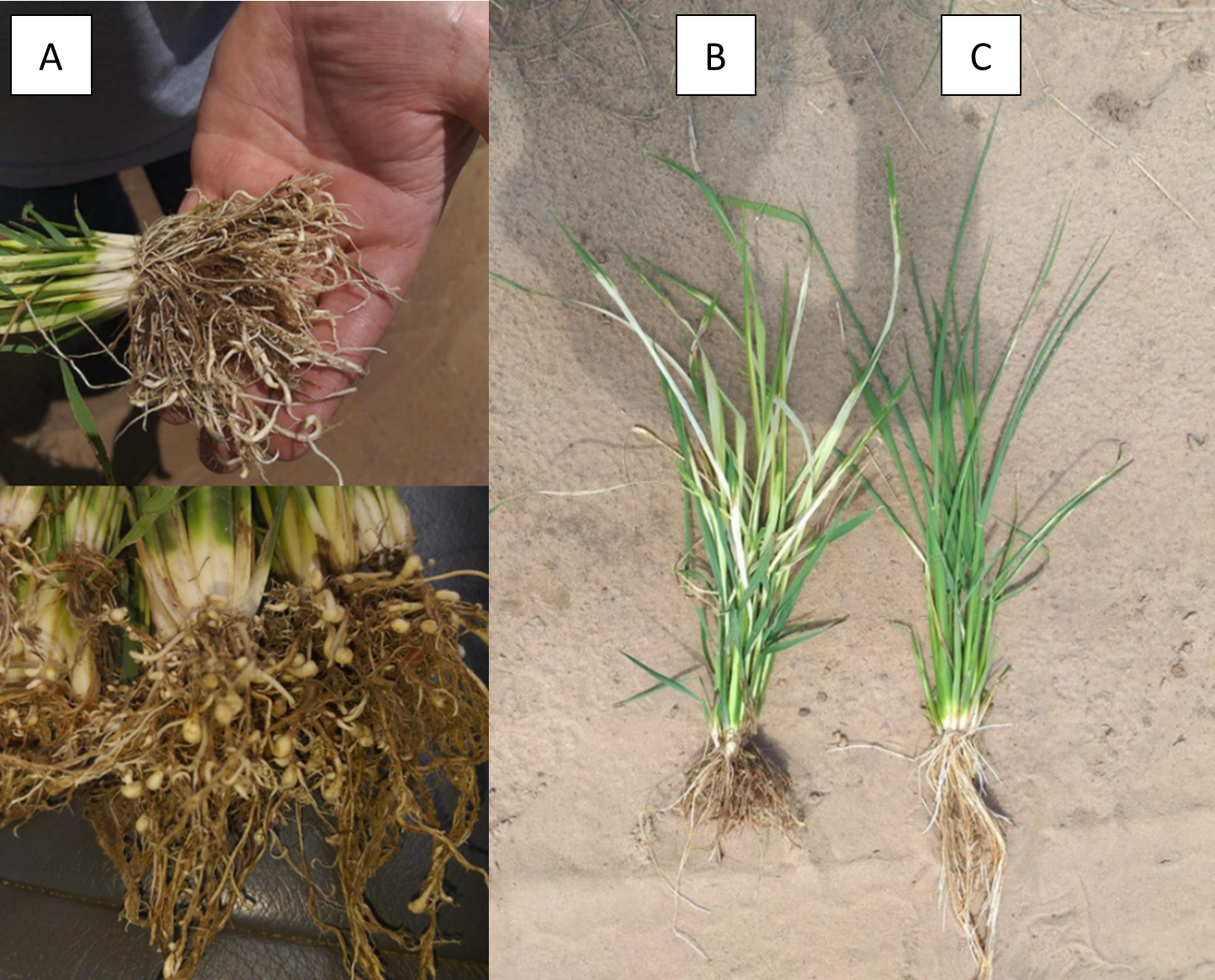Plant-parasitic nematodes, or phytonematodes, are capable of causing significant losses in various economically important crops. Since they are soil-dwelling microorganisms, field management becomes more challenging because once established in the field, eradication is practically impossible. Phytonematode management requires integrated control measures to effectively reduce the parasite population in the field below the economic damage threshold.
Biological management is becoming an indispensable option in phytonematode control. This is because the use of products based on beneficial microorganisms, such as bacteria and fungi, offers several advantages compared to chemical pesticides. These advantages include ease of application and handling, sustainability, and contribution to regenerative agriculture, providing clear cost-effectiveness and return on investment for farmers. An important factor for the use of biological products for nematode control is that they are registered for the biological target, rather than for specific crops. This expands the range of crops in which a bioproduct can be used, as long as the target remains the same.
Biological products can be recommended for seed treatment, in-furrow application, or soil spraying for established crops with exposed soil or perennial crops, always aiming to target the biological organisms. Products containing beneficial bacteria have gained market share in managing these parasites, especially in sandy soils where the problem becomes more pronounced. Furthermore, when using biological management to reduce nematode populations in the soil, additional effects on the crop can be observed, such as promoting growth, larger and more extensive root systems, improved nutrient and water absorption, and plant structure.
Currently, microorganisms of the Bacillus spp. genus are the most commonly used in biological product formulations. This is due to the versatility of these bacteria in the environment, rapid growth, diverse mechanisms of action, and the production of endospores (resistant structures) that encapsulate and protect bacterial cells, allowing mixing with chemical pesticides without reducing their control effectiveness.
Bacteria of the Bacillus spp. genus have numerous mechanisms of action associated with phytonematode control, including:
- Nematode disorientation in the soil: Nematodes move in the soil in response to concentration gradients and signals emitted by roots in the form of organic compounds such as exudates, secretions, and mucilages. The formation of biofilm on the roots, resulting from rapid bacterial multiplication, creates a "protective film" that acts as a physical and chemical barrier around the root, preventing nematodes from recognizing the chemotactic signals emitted by the roots and leaving them disoriented, without knowing where to move. Unable to infect the root, they eventually die in the soil.
- Antibiosis and enzyme production: The production of toxic antibiotics, when in contact with nematodes, causes their death. The production of hydrolytic enzymes leads to the physical destruction of nematode cell walls and initiates a degradation process of the microorganism. Proteases, on the other hand, degrade proteins essential for nematode development.
- Production of volatile organic compounds (VOCs): These are carbon-based molecules such as phenol, cyclohexene, 2-octanol, among others, produced by both bacteria and fungi in the soil. These VOCs have a toxic effect on nematodes, causing mortality in juveniles (J2) and inhibiting egg hatching.
- Competition for space and nutrients: By colonizing the rhizosphere and establishing themselves around the root through biofilm formation, in addition to the aforementioned benefits, bacteria also compete with nematodes for space and nutrients. Therefore, when a phytonematode attempts to infect a root, it encounters another microorganism in its place, producing antimicrobial molecules in addition to the physical barrier of the biofilm, which cause its death. It's important to note that nematode infection is also the gateway for phytopathogenic fungi that cause root diseases. Maintaining the plant's rhizosphere colonized by beneficial bacteria solves two problems.
- Induction of plant resistance: The plant is capable of recognizing the colonization of Bacillus in its tissues. Since it does not cause any tissue damage or maceration, the plant does not "need" to defend itself. However, upon identifying the entry of the beneficial bacteria, the plant triggers an "immunization" process. When colonized by a phytonematode, the plant activates its defense cascade, activating genes and producing defense enzymes (such as ligninases, peroxidases, among others) that act directly on the nematode.
- Growth promotion: As a secondary mechanism, bacteria of the Bacillus genus, for the most part, promote growth. They also stimulate the emergence of new roots, solubilize and mobilize nutrients from the soil, making them available to plants, and help the plant tolerate nematodes in the soil (Photo 1).

Photo 1. Roots of rice plants infected with nematodes from the Meloidogyne graminicola complex (A). Side-by-side comparison: untreated control (B); biological management for nematode control (C) in a commercial field. Image: Rodrigo Almeida/Biotrop.
Therefore, using high-quality products that contain microorganisms allowing mixing with pesticides is another technology to be incorporated into the farmer's management practices. This way, it is possible to mitigate the damage caused by nematodes through the use of biological products, aiming to ensure maximum control efficacy and return on investment.




